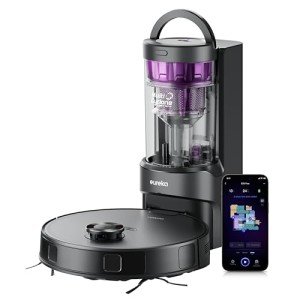Understanding Floor Robots: The Future of Home Cleaning
In recent years, technological advancements have considerably transformed the landscape of home cleaning. Among the most notable developments is the floor robot, a device that has rapidly acquired appeal for its benefit and effectiveness. This short article aims to check out the different aspects of floor robots, their performance, advantages, popular designs, and some regularly asked questions to assist customers make informed decisions.
What is a Floor Robot?
A floor robot, typically described as a robotic vacuum, is an automated device designed to browse floorings and eliminate dirt, dust, and particles. Unlike traditional vacuum, floor robots run autonomously, offering a problem-free cleaning experience. These smart machines utilize sensing units, mapping innovations, and advanced algorithms to clean different surfaces, consisting of hardwood, tile, and carpet.
How Do Floor Robots Work?
Floor robots run through a mix of hardware and software components. Here are the crucial features that allow their performance:
1. Sensing units
- Barrier Detection: Floor robots have integrated sensing units that help them identify obstacles, allowing them to browse around furnishings and prevent falls.
- Cliff Sensors: These prevent the robot from falling down stairs or ledges by acknowledging changes in elevation.
2. Navigation and Mapping
- Visual Mapping: Some innovative designs utilize video cameras and laser technology to develop in-depth maps of the cleaning location.
- Synchronised Localization and Mapping (SLAM): This technique helps the robot track its location and efficiently prepare its cleaning route.
3. Cleaning Mechanisms
- Suction Power: Most robotic vacuums use a suction system to record dirt and dust, which is then saved in an onboard dustbin.
- Brushing Systems: Many designs come equipped with rotating brushes or mops for boosted cleaning capabilities, especially on carpets or difficult surfaces.
4. Smart Features
- Connection: Many floor robots support Wi-Fi connection, enabling users to manage them by means of smartphone apps or smart home systems.
- Scheduling: Users can schedule cleaning times, guaranteeing their homes are tidy even when they're not there.
5. Autonomous Charging
- Self-Docking: Most robots instantly return to their charging station once their battery runs low, guaranteeing they're always all set to clean.
Advantages of Using a Floor Robot
The adoption of floor robots features many advantages that make them interesting users:
1. Convenience
Floor robots can clean while users address other tasks, allowing for multitasking and time-saving.
2. Increased Efficiency
Robotic vacuums typically cover more ground in less time compared to traditional techniques, thanks to their systematic cleaning patterns.
3. Constant Cleaning Routine
Users can set up regular cleansings, ensuring that their homes remain tidy without requiring daily intervention.
4. Accessibility
Robotic vacuums can easily access hard-to-reach areas, such as under furniture or in tight spaces.
5. Advanced Features
Lots of designs come geared up with functions like voice control and app combination, improving use and accessibility.
Popular Floor Robots
When considering a floor robot, numerous brand names and designs cater to various needs and spending plans. Here's a brief summary of some leading alternatives:
| Brand | Design | Secret Features | Price Range |
|---|---|---|---|
| iRobot | Roomba i7+ | Smart mapping, self-emptying dock | ₤ 600 - ₤ 800 |
| Roborock | Roborock S7 | Sonic mopping, obstacle avoidance | ₤ 500 - ₤ 700 |
| Neato | Neato D7 | D-shape design, advanced suction | ₤ 600 - ₤ 800 |
| Ecovacs | Ecovacs Deebot T8 | Mopping function, advanced mapping | ₤ 600 - ₤ 800 |
| Shark | Shark IQ Robot | Self-emptying base, home mapping | ₤ 400 - ₤ 600 |
(Note: Prices might differ based upon retailers and continuous promos.)
Frequently Asked Questions (FAQs)
1. Are floor robots effective on carpets?
Yes, a lot of contemporary floor robots are developed to tidy different surface areas, consisting of carpets. Models with strong suction and turning brushes are particularly effective at selecting up animal hair and ground-in dirt.
2. How typically should I run my floor robot?
This depends on your family's needs. For homes with pets or high foot traffic, day-to-day or every other day cleaning may be useful. For quieter families, running the robot as soon as a week may be adequate.
3. Can I control my floor robot remotely?
Lots of floor robots include smartphone apps that enable users to control their devices from another location, schedule cleanings, and monitor efficiency.
4. Do I require to clear the dustbin frequently?
A lot of robots require regular emptying of the dustbin, specifically in homes with pets or heavy soil. Nevertheless, mouse click the up coming webpage offer self-emptying abilities, which decrease user participation.
5. Are floor robots suitable for all types of flooring?
Most floor robots are efficient on various surfaces, including wood, tile, and low-pile carpets. Nevertheless, some may perform better on particular surface areas, so it's necessary to pick a design matched to your home's requirements.
As homes continue to accept innovation, floor robots have actually become vital cleaning companions, offering benefit, performance, and advanced functions. Comprehending their performances, advantages, and readily available models enables customers to pick the best floor robot to fulfill their particular cleaning needs. By investing in this innovative technology, homeowners can guarantee their living spaces remain clean and comfortable with very little effort.

